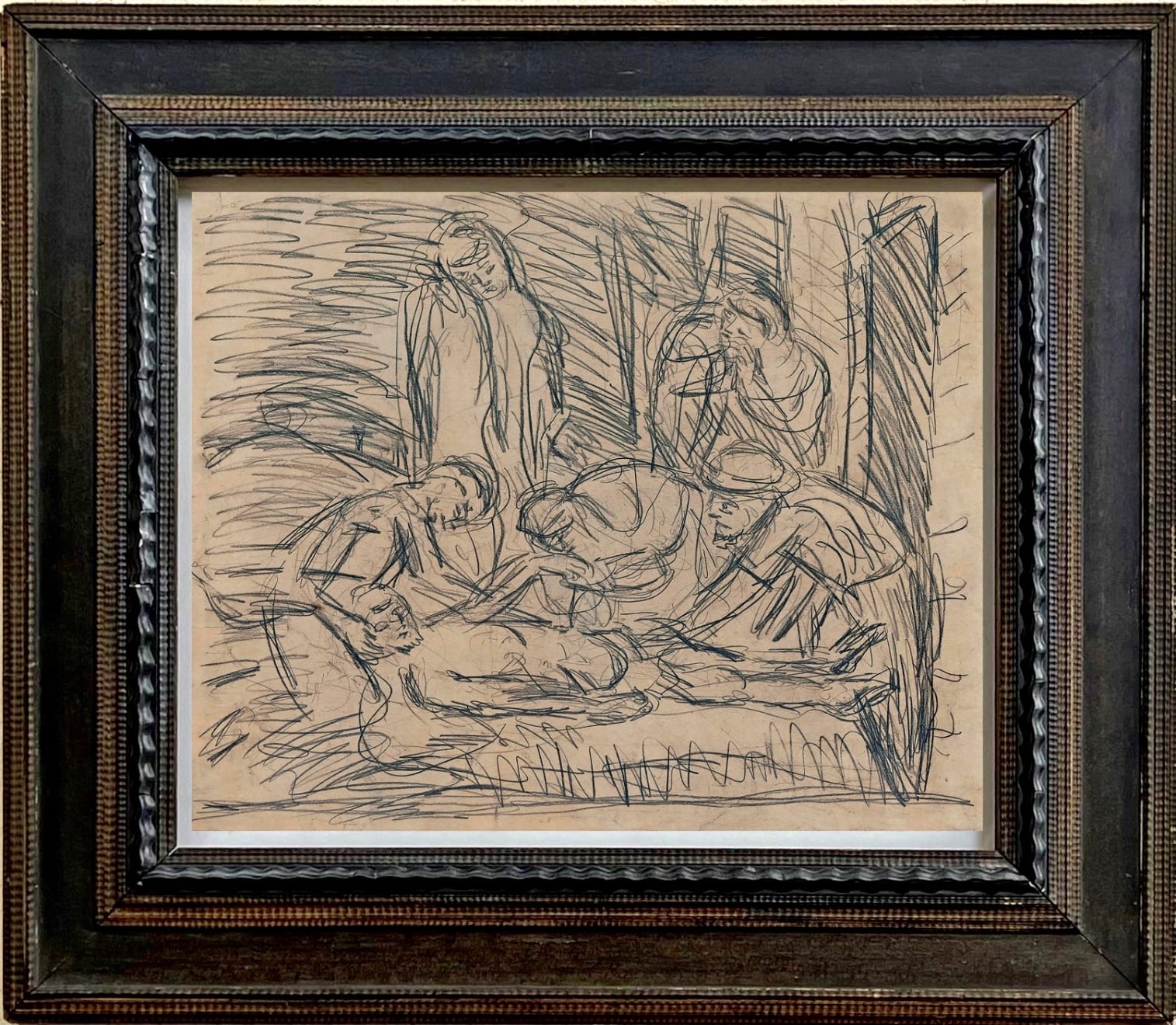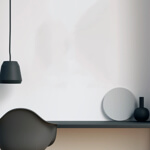Leon Kossoff 1926-2019
The Lamentation over the dead Christ (after Poussin), 1995
Pencil on paper
57 x 76 cms
22 7/16 x 29 14/16 ins
22 7/16 x 29 14/16 ins
13502
£ 22,000.00 + ARR
At the foundation of Kossoff's practise was drawing and at the heart of this was drawing from the Old Masters and from the lifemodel. Poussin was an especially favourite and...
At the foundation of Kossoff's practise was drawing and at the heart of this was drawing from the Old Masters and from the lifemodel. Poussin was an especially favourite and Kossoff's work after Poussin was the subject of a major exhibition that toured to the Los Angeles County Museum of Art and the J Paul Getty Museum of Art in 2000. The related book by Richard Kendall Drawn to Painting. Leon Kossoff Drawings and Prints after Nicolas Poussin was published that same year.
The present work is one of a series of pencil and etched studies of The Lamentation over the Dead Christ, 1656-8, by Nicolas Poussin (1594-1665), owned by the National Gallery of Ireland, Dublin. Other drawings are reproduced in Kendall op.cit. pp.62-63. The Tate also owns two prints by Kossoff after this Poussin painting (Tate P11721-2). This drawing appears to have been used in preparation for an etching of the same subject. In keeping with drawings Kossoff made from Poussin's paintings in 1995 it is on sheet of 56 x 76 cms, but the image is framed by a rectangle that is 45 x 58 cms, the same szie as the plate for the corresponding etching.
The Tate cataloguing of their etching asserts that Kossoff response "does not compete with Poussin's painting, nor does it seek to transcribe, copy or paraphrase it. Rather, it acknowledges the gulf that separates it from the pictorial culture of former times and reveals his desire to find points of contact with Poussin. Kossoff has described the value of this kind of draughtsmanship as a means to building up an acquaintance with the subject of a picture made by another artist until he feels free to 'move about in its imaginative spaces' (Kendall, p.19).
Kossoff has described the moment of intense elation, which occurred some forty years ago, when he first established a vital connection with Poussin's art. As a youth and then as a student in London, he had become familiar with the rich historical collections of the National Gallery. One day he had a transformative experience while looking at Poussin's Cephalus and Aurora, 1629-30 (National Gallery, London):
"It seemed as though I was experiencing the work for the first time. I suppose there is a difference between looking and experiencing. Paintings of this quality, in which the subject is endlessly glowing with luminosity, can, in an unexpected moment, surprise the viewer, revealing unexplored areas of self." (Kendall, p.19)
The trigger for this series of works was the 1995 retrospective exhibition, Nicolas Poussin 1594-1665, at the Royal Academy of Arts, London. Kossoff went in before the public opening hours to draw from the paintings, including the present work.
The present work is one of a series of pencil and etched studies of The Lamentation over the Dead Christ, 1656-8, by Nicolas Poussin (1594-1665), owned by the National Gallery of Ireland, Dublin. Other drawings are reproduced in Kendall op.cit. pp.62-63. The Tate also owns two prints by Kossoff after this Poussin painting (Tate P11721-2). This drawing appears to have been used in preparation for an etching of the same subject. In keeping with drawings Kossoff made from Poussin's paintings in 1995 it is on sheet of 56 x 76 cms, but the image is framed by a rectangle that is 45 x 58 cms, the same szie as the plate for the corresponding etching.
The Tate cataloguing of their etching asserts that Kossoff response "does not compete with Poussin's painting, nor does it seek to transcribe, copy or paraphrase it. Rather, it acknowledges the gulf that separates it from the pictorial culture of former times and reveals his desire to find points of contact with Poussin. Kossoff has described the value of this kind of draughtsmanship as a means to building up an acquaintance with the subject of a picture made by another artist until he feels free to 'move about in its imaginative spaces' (Kendall, p.19).
Kossoff has described the moment of intense elation, which occurred some forty years ago, when he first established a vital connection with Poussin's art. As a youth and then as a student in London, he had become familiar with the rich historical collections of the National Gallery. One day he had a transformative experience while looking at Poussin's Cephalus and Aurora, 1629-30 (National Gallery, London):
"It seemed as though I was experiencing the work for the first time. I suppose there is a difference between looking and experiencing. Paintings of this quality, in which the subject is endlessly glowing with luminosity, can, in an unexpected moment, surprise the viewer, revealing unexplored areas of self." (Kendall, p.19)
The trigger for this series of works was the 1995 retrospective exhibition, Nicolas Poussin 1594-1665, at the Royal Academy of Arts, London. Kossoff went in before the public opening hours to draw from the paintings, including the present work.
Provenance
Private Collection, EnglandLiterature
Richard Kendall, Drawn to Painting, London 2000, p.31, 37, (related works reproduced pp.62-65)Paul Moorhouse, Leon Kossoff, exhibition catalogue, Tate Gallery, London 1996, pp.27-30
Leon Kossoff: Recent Paintings, exhibition catalogue, British Council, Venice 1995




